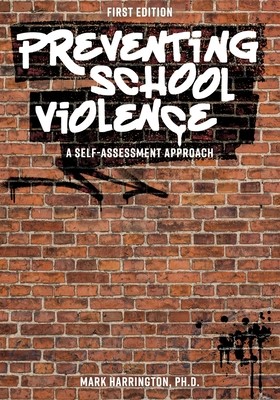
- We will send in 10–14 business days.
- Author: Mark Harrington
- Publisher: Cognella Academic Publishing
- ISBN-10: 1793570272
- ISBN-13: 9781793570277
- Format: 17.8 x 25.4 x 0.9 cm, minkšti viršeliai
- Language: English
- SAVE -10% with code: EXTRA
Reviews
Description
Preventing School Violence: A Self-Assessment Approach provides readers with a research-based risk-management model designed to prevent school shootings. The self-assessment tool is adapted from a protocol developed by Tom McWeeney, which has been used to assess the readiness of FBI field offices to prevent terrorist attacks in the USA. Through extensive research, real-world application, and collaboration with Dale Watson, the former assistant director of the FBI, and Professor McWeeney, author Mark Harrington has modified this method with the express goal of reducing instances of school violence.
Opening chapters share Dr. Harrington's experiences in the field and introduce the self-assessment tool. They underscore the importance for schools and organizations to be well prepared to respond not only to high-risk/high-consequence situations but also low-risk/high-consequence situations. The book shares key data from FBI reports regarding pre-attack behaviors of active shooters. Additional chapters outline the attributes of a successful self-assessment program and how to reimagine and rework security measures, including law enforcement/security presence, exercises and drills, surveillance, and more.
The text walks readers through the criteria for an effective self-assessment approach: intelligence, mental health services, administrative support, training, and crisis plan considerations. They learn how gangs in schools and neighborhood ties can influence safety and security on school campuses. Throughout, true stories from the field demonstrate the need for the model and its application, and statistics, charts, and graphs provide necessary research to bolster action and understanding.
EXTRA 10 % discount with code: EXTRA
The promotion ends in 21d.11:47:31
The discount code is valid when purchasing from 10 €. Discounts do not stack.
- Author: Mark Harrington
- Publisher: Cognella Academic Publishing
- ISBN-10: 1793570272
- ISBN-13: 9781793570277
- Format: 17.8 x 25.4 x 0.9 cm, minkšti viršeliai
- Language: English English
Preventing School Violence: A Self-Assessment Approach provides readers with a research-based risk-management model designed to prevent school shootings. The self-assessment tool is adapted from a protocol developed by Tom McWeeney, which has been used to assess the readiness of FBI field offices to prevent terrorist attacks in the USA. Through extensive research, real-world application, and collaboration with Dale Watson, the former assistant director of the FBI, and Professor McWeeney, author Mark Harrington has modified this method with the express goal of reducing instances of school violence.
Opening chapters share Dr. Harrington's experiences in the field and introduce the self-assessment tool. They underscore the importance for schools and organizations to be well prepared to respond not only to high-risk/high-consequence situations but also low-risk/high-consequence situations. The book shares key data from FBI reports regarding pre-attack behaviors of active shooters. Additional chapters outline the attributes of a successful self-assessment program and how to reimagine and rework security measures, including law enforcement/security presence, exercises and drills, surveillance, and more.
The text walks readers through the criteria for an effective self-assessment approach: intelligence, mental health services, administrative support, training, and crisis plan considerations. They learn how gangs in schools and neighborhood ties can influence safety and security on school campuses. Throughout, true stories from the field demonstrate the need for the model and its application, and statistics, charts, and graphs provide necessary research to bolster action and understanding.


Reviews